70 Totally Amazing Facts We Learned From Snapple Bottle Caps
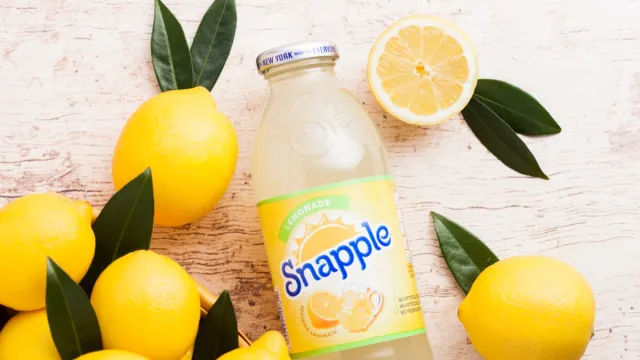
Every ’90s kid—and adult, for that matter—can recall popping open a bottle of Snapple and flipping over the cap to read one of the flavored tea’s famous “Real Facts.” While you may have occasionally doubted the accuracy of those unbelievable-sounding bottle facts, most are 100 percent true. Read on for 70 of the most interesting and mind-blowing pieces of trivia that the tasty drink has to offer, from astronauts growing taller in space to slugs having four noses. We’ve also dug into the science behind them.
RELATED: 100 Fascinating Facts You’ll Want to Share with Everyone You Know.
#763: Tigers have striped skin, not just striped fur.
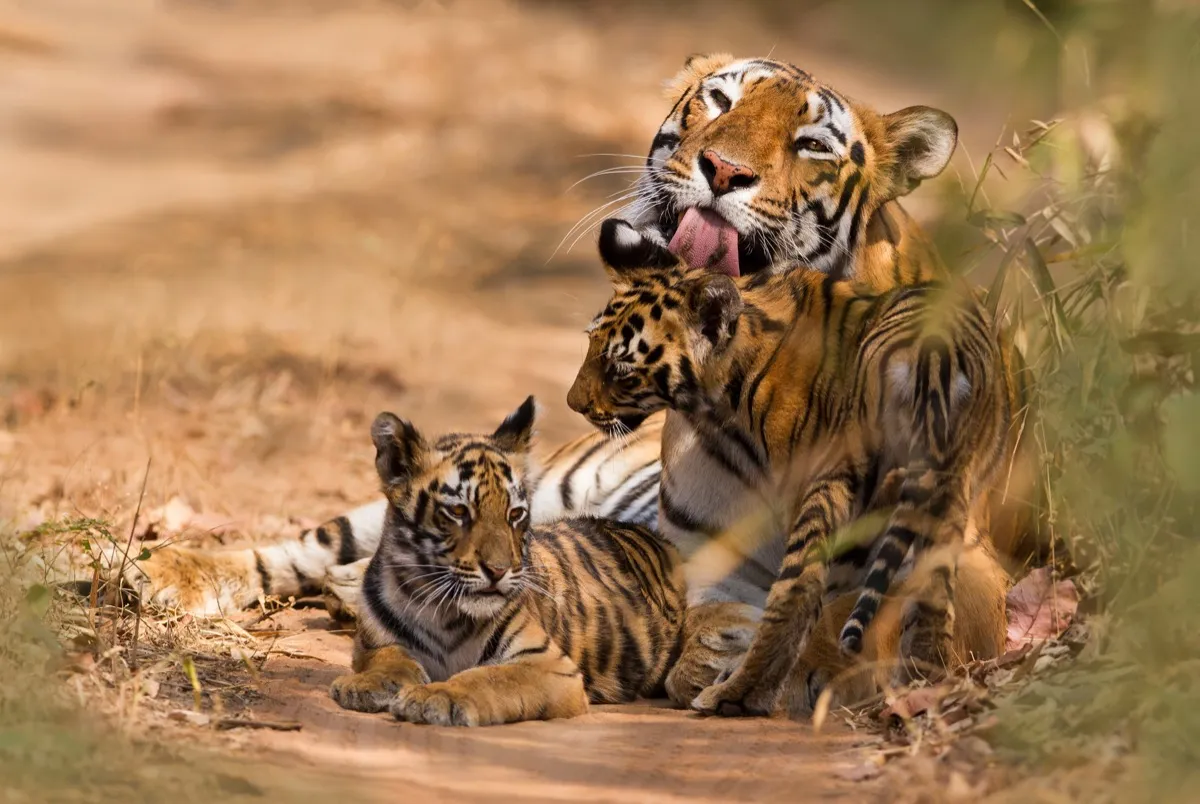
When it comes to animals’ stripes, some are skin-deep while others are more superficial. For instance, zebras and giraffes have patterns on their coats, not their skin. However, certain furry big cats—including tigers and snow leopards—retain their fur markings even when their hair is shaved off. Greg Barsh, a geneticist at Hudson Alpha Biotechnology Institute explained to National Geographic that this is because hair follicles of different colors are embedded into the cats’ skin. He compared it to a human’s 5 o’clock shadow.
#735: A full moon is nine times brighter than a half moon.
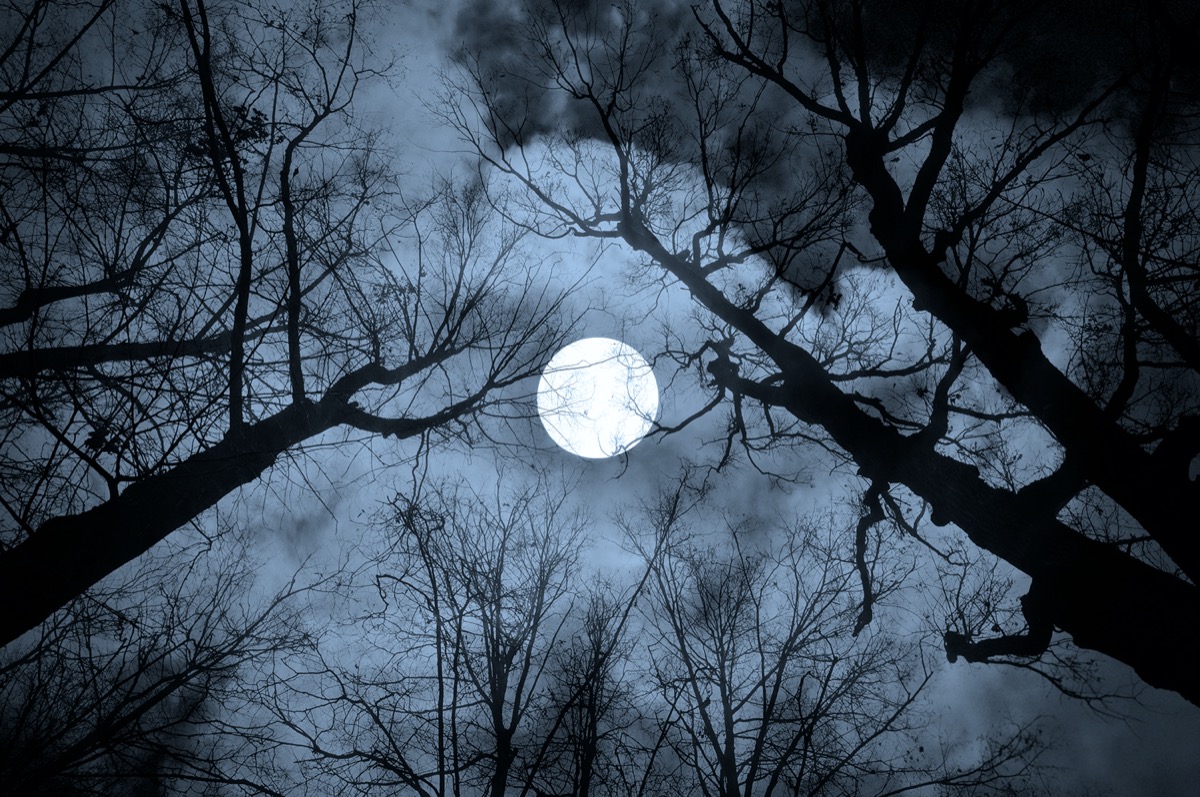
When you spot a half moon in the night sky, you’re seeing a lunar surface that’s only dimly lit and is dulled by shadows, according to meteorologist Tom Skilling, per the Chicago Tribune. However, Jonti Horner, Professor of Astrophysics at the University of Southern Queensland, explained via The Conversation that the Earth is between the sun and the moon when the moon is full, therefore “shadows cast by objects on the moon are pointing away from us, hidden from view. So we see the maximum amount of the moon lit up, nice and bright.”
#458: Fresh cranberries can be bounced like a rubber ball.
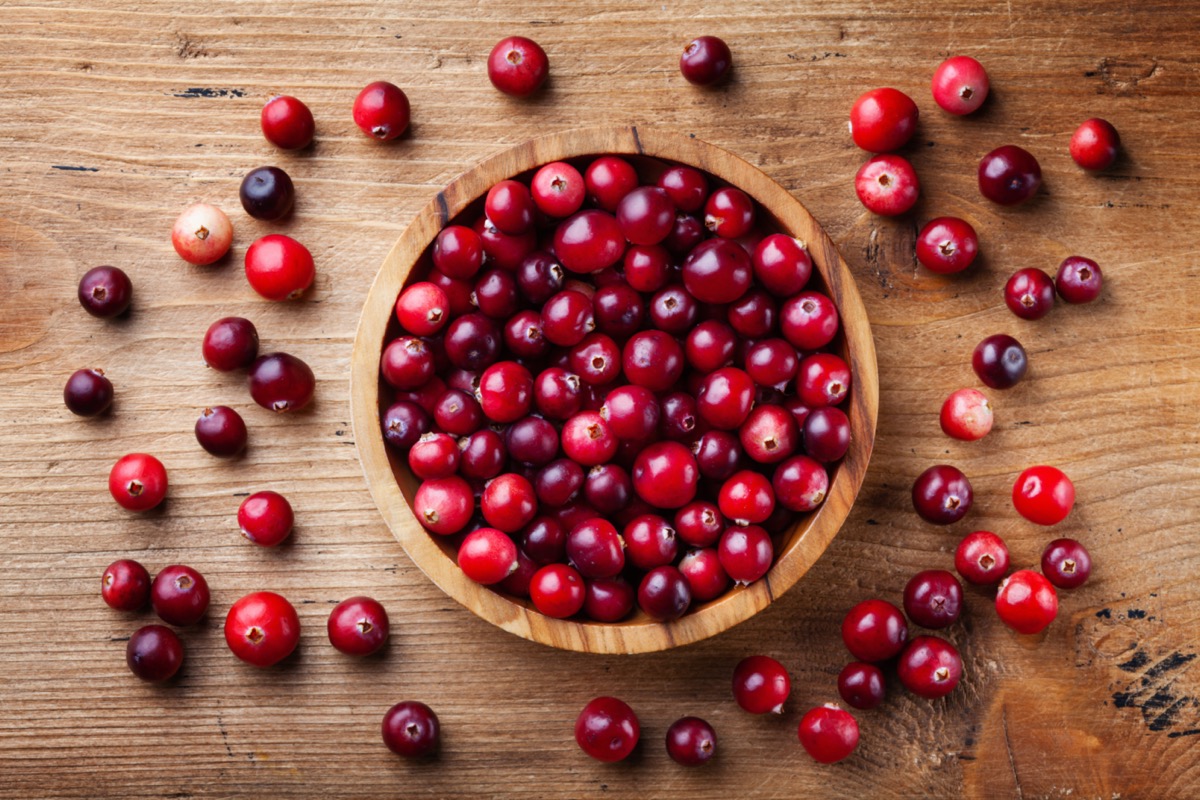
The cranberry experts over at Ocean Spray explain that, the tiny fruit is bouncy because they’re filled with air pockets. However, that’s only if the cranberries are in good shape. If cranberries are rotten or ruined, then they lose their bounciness. That’s why trying to bounce your cranberries is a fun way of doing a quality check. Professionals do it with these cranberry bounce boards.
#785: The middle finger has the fastest growing nail.

If it seems like some of your fingernails need to be trimmed more frequently than others, that’s because they do! Healthline explains that while nails usually grow about 3.47 millimeters a month (or a tenth of a millimeter every day), those on your dominant hand grow faster, as do the nails on your longer fingers. On top of that, a study first published in the Journal of the European Academy of Dermatology and Venereology in 2010 found that fingernails grow faster than toenails.
#1022: Miami installed the first ATM for inline skaters.

As reported by the Orlando Sentinel, the Miami Beach branch of Citibank noticed that there were enough people rolling around town that an option for them to grab some cash without having to take their skates off and walk into the bank in sweaty socks might be prudent. First installed in 1996, the ATM was a hit with rollerbladers. Brian Leonard, who skated to his job as a waiter, told the newspaper at the time, “Hey, that’s a great thing for skaters. I’ll be using that baby all the time.”
#1010: Rats and mice are ticklish, and even laugh when tickled.
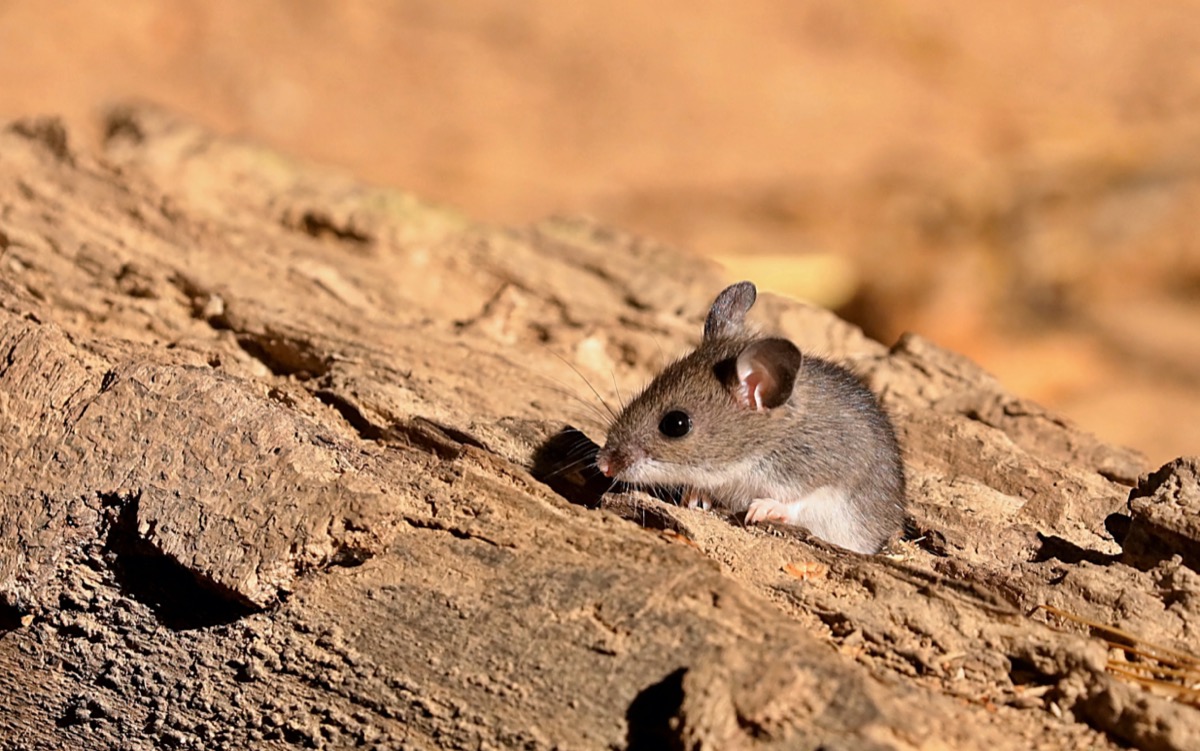
If you’re someone who tries to steer clear of rodents, then you probably don’t know that they’re ticklish—just like humans. How do scientists know that? Because of the laughter, of course. A study published in Behavioral Brain Research in 2000 found that when rats were tickled, they let out a chirping sound that was like “youthful human laughter that typically occurs during play.”
#741: Plants, like humans, can run a fever if they are sick.

“Sick plants are like sick children,” reads a Time report from 1951. The magazine published the findings of Professor C. E. Yarwood from the University of California, who did tests on healthy leaves as well as ones that were infected with a virus or disease. He noticed that the sick leaves were taking in more oxygen than their healthy counterparts which was causing a fever.
#1278: Hawaiian pizza was actually created in Canada.

While controversial, Hawaiian pizza was actually the most popular type of pie in the U.S. in 2020, according to GrubHub data. But, as CTV News notes, the combination of ham, cheese, tomato sauce, and pineapple, didn’t originate there. An Ontario man named Sam Panopoulos claimed that he invented the Hawaiian pizza in 1962. “People only put on mushroom, bacon, and pepperoni, that’s all,” Panopoulos once said, per the Food Network. “I had pineapple in the restaurant and I put some on, and I shared with some customers and they liked it. And we started serving it that way. For a long time, we were the only ones serving it.”
#196: If you doubled one penny every day for 30 days, you would have $5,368,709.12.
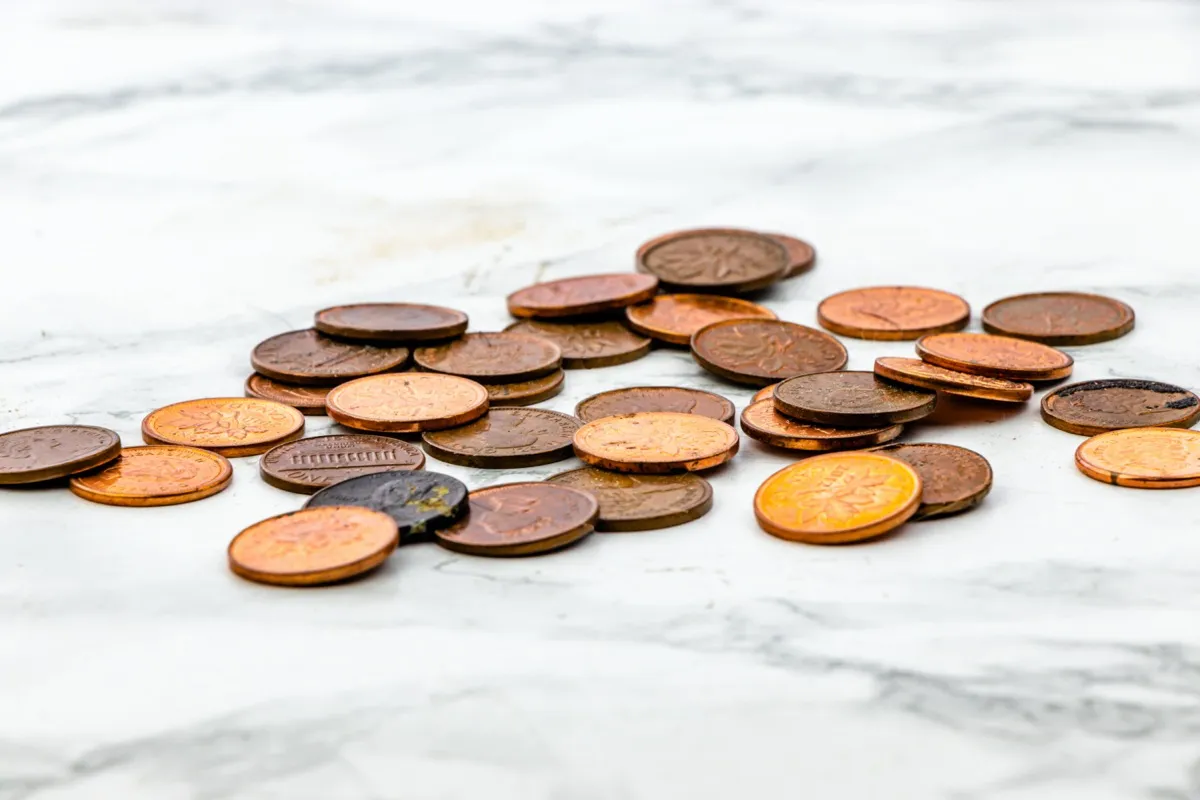
If you were asked to choose between $1 million right now or one penny now and then double the amount each day for a month, which option would you choose? While the lump sum sounds like a lot, The College Investor explains that the second choice is the more financially lucrative one. By day 30, in this scenario, you’d have $5,368,709.12 in your pocket.
#370: Heat, not sunlight, ripens tomatoes.

Although plenty of plants rely on sunlight in order to survive and thrive, Cornell University notes that “light conditions have very little to do with [tomatoes] ripening.” The same goes for decent soil. What tomatoes do need is the right temperature. If they’re too hot or too cold, they not only ripen slowly but can also face other issues. If you want perfectly ripe tomatoes, then pick them when they first seem to be ripening and then let them sit at room temperature to finish up.
#953: The longest attack of hiccups lasted 68 years.

Hiccups can be annoying, but can you imagine having them non-stop for 68 years? That’s what happened to Iowa’s Charles Osborne, as reported by the New York Daily News. The hiccups started in 1922 when Osborne fell while attempting to “butcher a 350-pound hog.” He explained, “I felt nothing, but the doctor said later that I busted a blood vessel the size of a pin in my brain.” His bout of hiccups finally stopped in 1990, the year before he died at 97.
#315: No two lip impressions are the same.

When researchers looked a the lips of students from MediCiti Medical College for a study that was published in 2017 in the Indian Journal of Clinical Anatomy and Physiology, they found that there are various common lip patterns, with “Type I”—”a clear-cut groove running vertically across the lip”—being the most frequently observed. They also discovered that, just like fingerprints, “no two lip prints were similar, thus establishing the uniqueness of lip prints.”
#451: Human eyes have over two million working parts.

Per the Canadian Association of Optometrists, your eyes have two million working (or moving) parts. On top of that, they also have seven million cones, which are what allow you to see both color and detail. As for your ability to see in the dark, that’s made possible with the help of a whopping 100 million cells, or rods.
#470: Dairy cows drink up to 50 gallons of water per day.
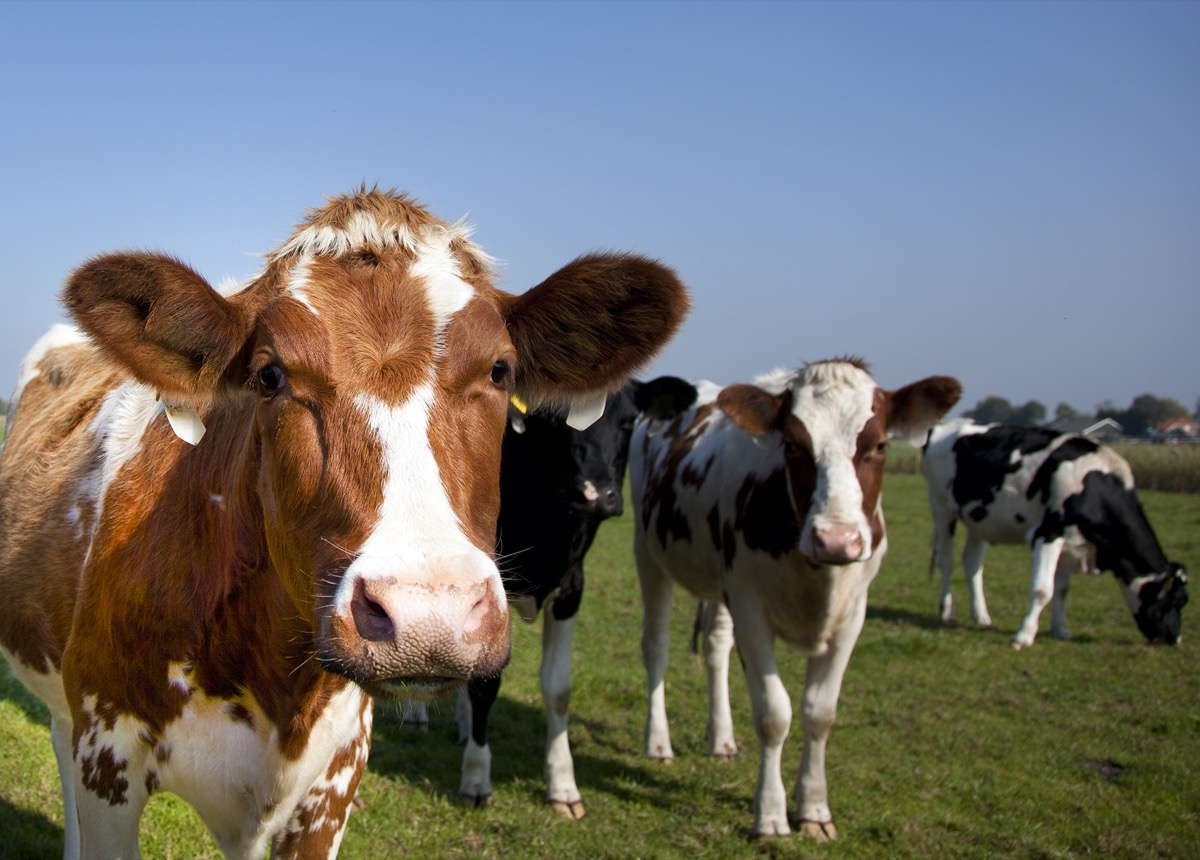
The University of Kentucky explains that around four to four-and-a-half pounds of water are needed in order for a cow to produce a single pound of milk. Sound like a lot? That’s nothing for this animal. Michigan State University notes that a cow drinks anywhere from 30 to 50 gallons of water a day and twice as much if it’s hot.
#1260: Mercury and Venus are the only planets in our solar system with no moon.

While every planet in our solar system shares a sun, they each have their own moons—other than Mercury and Venus, which have no natural moons. Meanwhile, Mars has two, Neptune has 14, and Uranus has 27. But that’s nothing compared to Jupiter’s 79 (53 confirmed and 26 provisional), as well as Saturn’s 82 (53 confirmed, 29 provisional).
#419: A jiffy is an actual time measurement equaling 1/100th of a second.

When someone tells you that they will be there in a jiffy, the delay is difficult to quantify. However, according to BBC Science Focus Magazine, a jiffy is a specific measurement, even if we don’t use it that way in conversation. A second could contain around three hundred thousand billion billion jiffies to a physicist who is considering “how long light takes to travel a distance of one femtometre,” the magazine states. Or a jiffy might be one-fiftieth of a second, if you’re going by the UK’s 50Hz system.
#686: A pelican can hold more food in its beak than its belly.
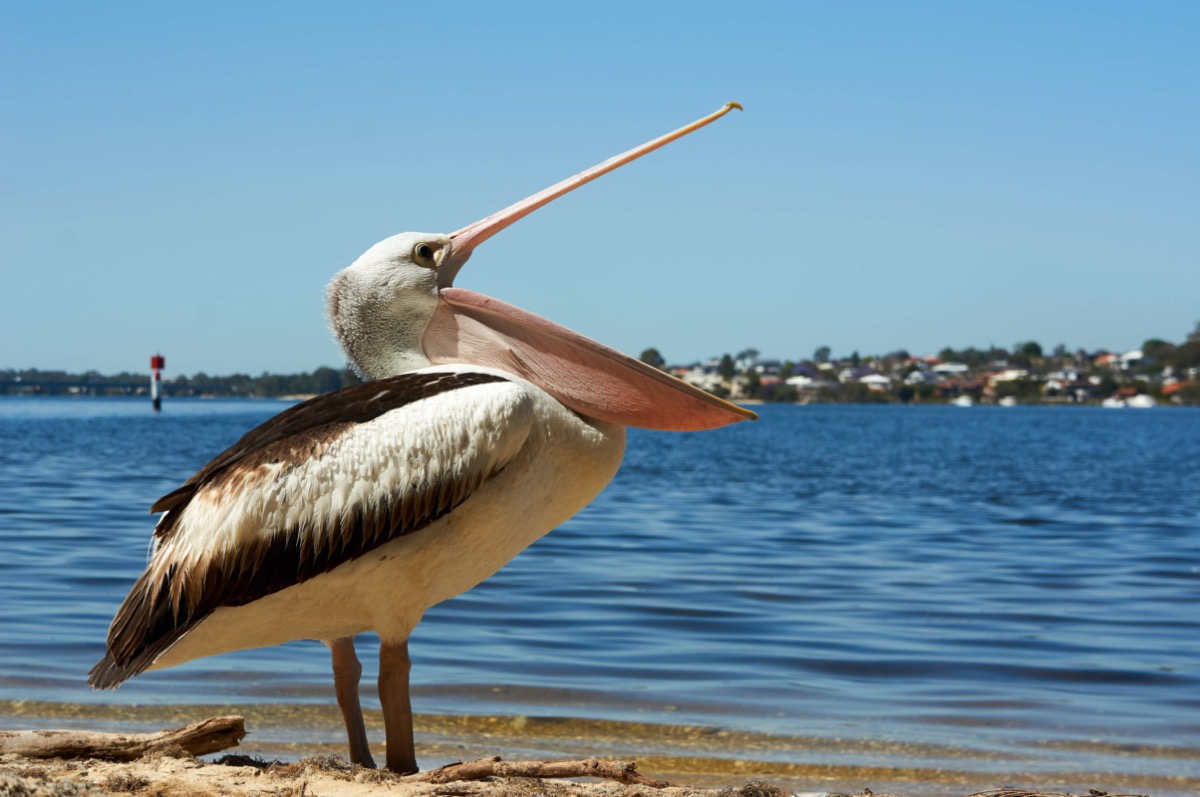
“A wonderful bird is the pelican/His bill will hold more than his belican,” poet Dixon Lanier Merritt wrote in 1913. Apparently, the playful rhyme is true. According to the U.S. Fish & Wildlife Service, the California brown pelican can gulp up to three gallons of water in its bill, while its belly will hold only one.
#1521: The 100 folds in a chef’s hat represent the 100 ways to cook an egg.

When Bon Appétit reached out to professional chefs to confirm that the 100 folds in their pleated hats represent the 100 different ways that they could cook an egg, they each confessed that they were familiar with the fact but didn’t know where it originated. However, a professor at the Institute of Culinary Education and chair of the Culinary Historians of New York, Cathy Kaufman, believes that the design may be a nod to the late Auguste Escoffier, the famous French chef behind Le Guide Culinaire, which boasts 143 ways to prepare eggs.
#955: A bolt of lightning can reach temperatures hotter than the sun.
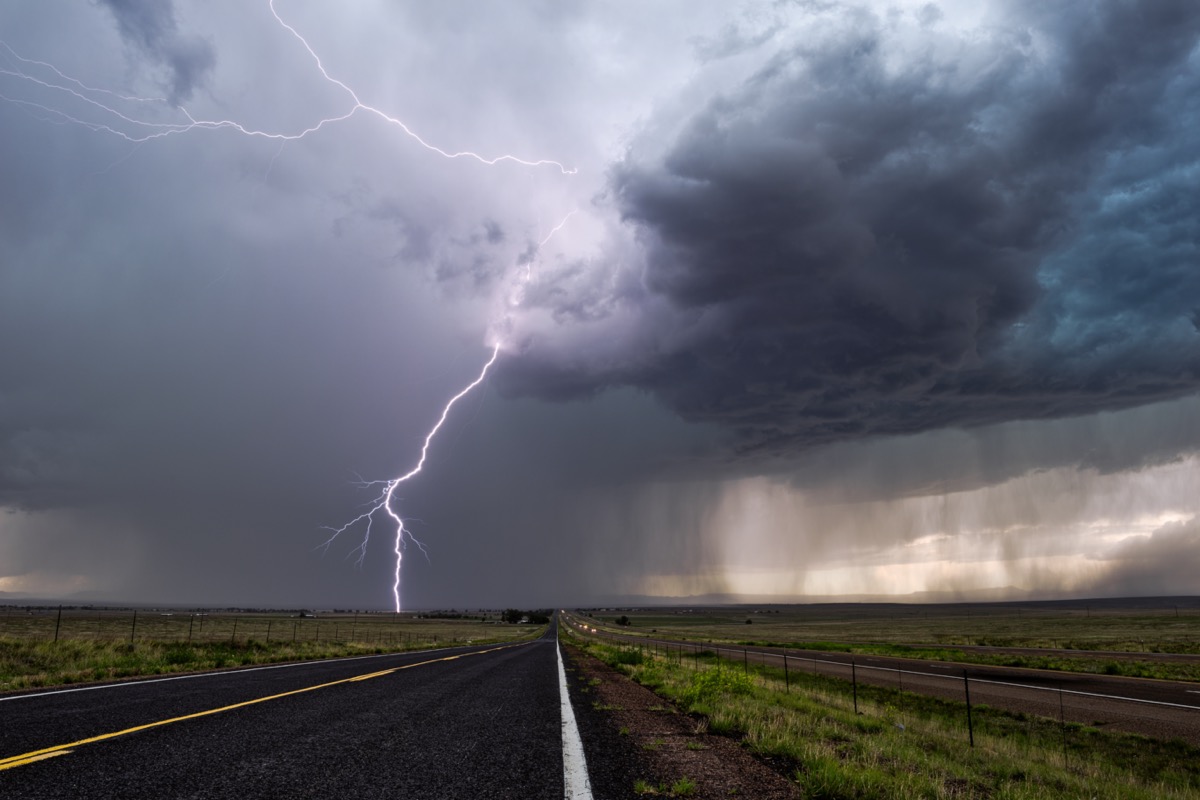
There’s no doubt that lightning is powerful, but it also happens to be incredibly hot. In fact, NASA explains that lightning is four times hotter than the sun, which has a surface of around 11,000° Fahrenheit. The National Weather Service also notes that the air lightning travels through can reach 50,000° Fahrenheit, which is around five times hotter than the surface of the sun.
#1388: Human thigh bones are stronger than concrete.

Along with the jaw, the thigh bone or femur is the strongest bone in the human body. And, per Live Science, a “cubic inch of bone can in principle bear a load of 19,000 lbs. (8,626 kg) or more—roughly the weight of five standard pickup trucks—making it about four times as strong as concrete.”
#950: The first spam message was transmitted over telegraph wires in 1864.

We may think of spam as a modern annoyance, but spam first began plaguing humans more than 100 years ago. According to Time, “The first unsolicited messages came over the wires as early as 1864, when telegraph lines were used to send dubious investment offers to wealthy Americans.”
RELATED: 30 Moon Facts That Are Out of This World.
#1,416: Mangoes can get sunburned.
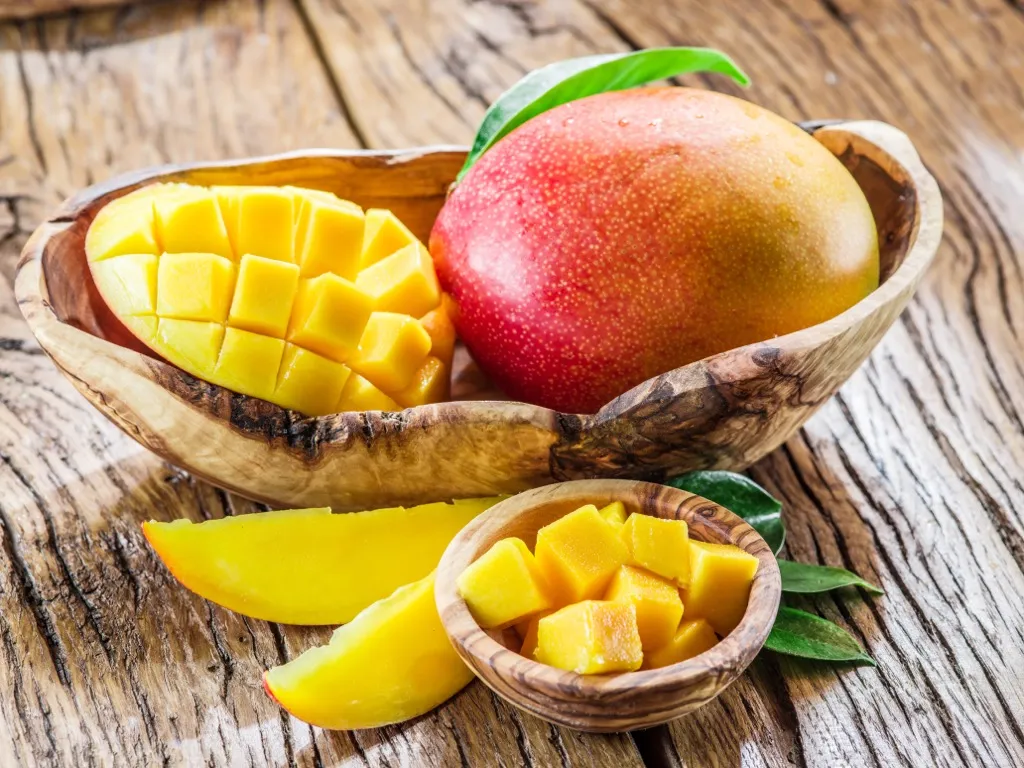
If you stay out in the sun too long and forget to apply the proper amount of sunscreen, you’ll probably end up with a bad sunburn. And mangoes can relate. The fragile fruit can also be damaged by the sun, getting burns that result in bleaching, lesions, and discoloration. In fact, in 2014, Australian mango growers lost nearly a quarter of their crop due to sunburn.
#829: Women’s hearts typically beat faster than men’s.

According to Columbia University’s Gender-Specific Medicine journal, men’s hearts are larger, but women’s hearts beat faster.
#4: Slugs have four noses.
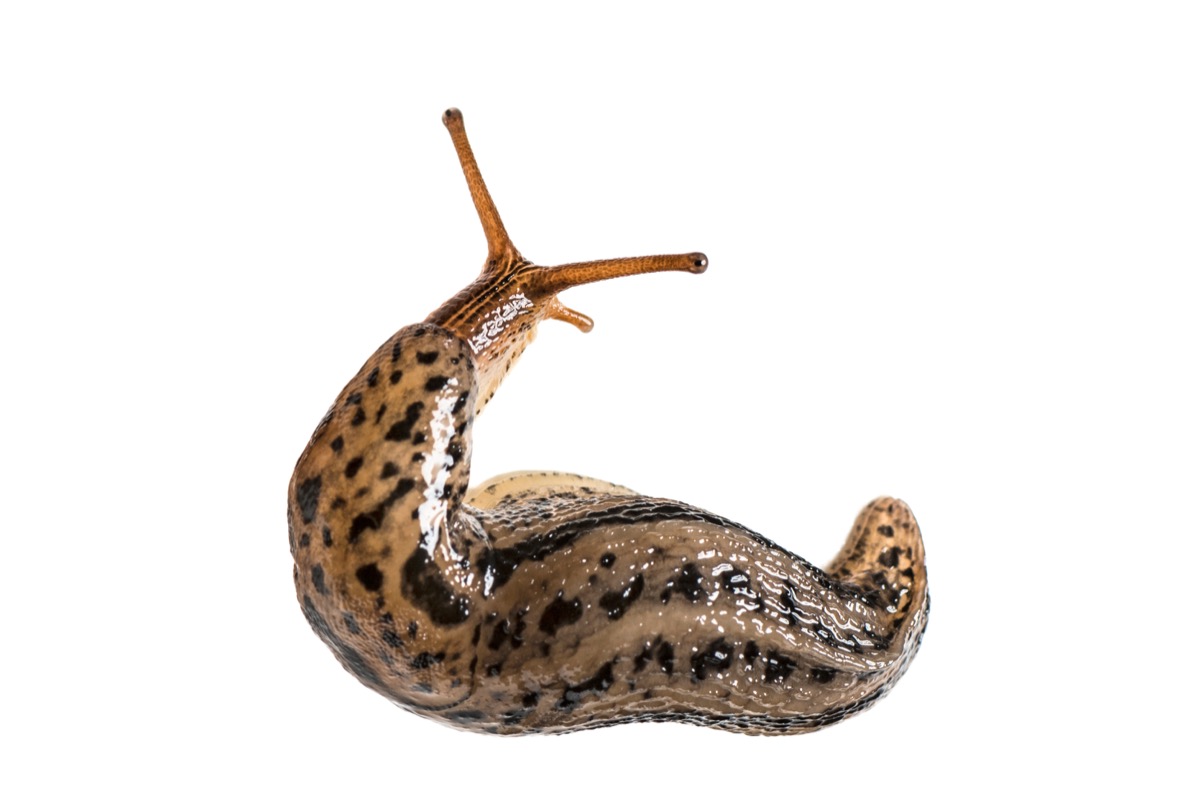
Humans have two eyes, two ears, two hands, and just one nose—and that seems to be all we need. However, slugs have not one, but four noses, according to National Geographic. And if you think that’s weird, way until your hear that the slimy creatures also have 3,000 teeth.
#166: Before mercury, brandy was used to fill thermometers.

When you look at an analog thermometer to check the temperature, it’s mercury you see inside. However, before mercury was used, thermometers were filled with brandy (yes, the kind you drink), according to Discover.
#170: In 1878, the first telephone book ever issued contained only 50 names.

Yes, when the first phone book was issued in 1878, there were only 50 names inside, and they were all residents of Connecticut.
“The telephone directory widely considered to be the absolute first phone book was nothing but a sheet of cardboard with the names of both private people and businesses who had a telephone,” according to Smithsonian Magazine. “The fact that there were 50 people to call in New Haven, Connecticut in 1878 definitely had something to do with the fact that the telephone was invented near there less than two years previously and was first demonstrated by inventor Alexander Graham Bell in New Haven.”
#296: Abraham Lincoln was the tallest U.S. president at 6’4”, while James Madison was the shortest at 5’4”.

“Americans have grown taller over time—and so have their leaders,” writes David Sim for Newsweek. When it comes to the U.S. presidents, there’s an entire foot between the height of the tallest and the shortest. Abraham Lincoln takes the top spot at 6’4”, while James Madison lands at the bottom at 5’4″.
#1433: Toe wrestling is a competitive sport.

If you have dexterous digits on your feet, then you might want to consider becoming a toe wrestler. Founded in 1974 at a bar in Wetton, Staffordshire, “the idea for the game started when a group of friends was sitting around drinking at Ye Olde Royal Oak Inn and bemoaning the fact that the U.K. didn’t produce world champions at anything,” Ripley’s states. “The solution? Create a new sport there in the U.K. and ensure that a U.K. citizen would take the cup.”
#97: A turkey can run at 20 mph.
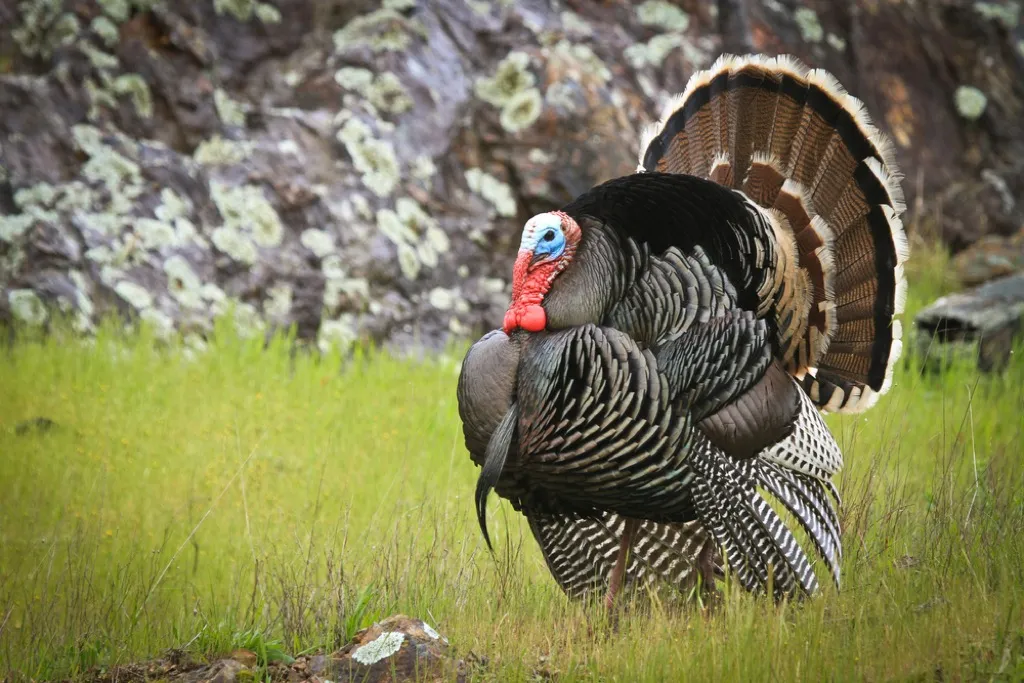
You know that cheetahs, gazelles, horses, and jackrabbits are speedy animals, but did you know how fast a turkey can hustle? According to National Geographic, wild turkeys can run up to 25 miles per hour. However, they can only keep that speed for short bursts.
#269: Horseback riding can improve your posture.

Cowboy-ing up may help you to stand and sit up straighter, and not just because of the confidence. According to the Journal of Physical Therapy Science, “horseback riding…simulates…the development of equilibrium, flexibility, and whole-body muscles while improving the balance and postural adjustment.”
#1405: Cherophobia is the fear of happiness.

Not everyone yearns for entertaining experiences—some people avoid pleasurable pursuits whenever possible. That includes those who suffer from cherophobia, which is a fear of happiness. Due to the belief that something bad might happen or that being happy (or showing others that you’re happy) is a bad thing, those with the condition will avoid doing things that others would eagerly embrace.
#340: There is an underground mushroom in Oregon that measures 3.5 miles across.

Not only is there a massive mushroom in Oregon’s Malheur National Forest that spans a full 2,385 acres, but the fungus is also entirely underground, according to National Geographic. Officially called the armillaria ostoyae, the ‘shroom is hilariously known as the Humongous Fungus. Estimated to be anywhere from 2,400 years to 8,650 years old, the giant mushroom is thought to be the largest organism on earth.
#354: Bamboo can grow three feet in one day.

Guinness World Records confirms that bamboo is the fastest growing plant on the planet. Increasing at a speed of 0.00002 mph, it’s capable of growing nearly three feet in just one day.
For more trivia sent right to your inbox, sign up for our daily newsletter.
#460: Astronauts actually get taller in space.

Due to the lack of gravity in space, astronauts can grow several inches taller when they’re there, according to Scientific American. However, the boost is only temporary. The space travelers shrink back down to their normal size once they return to Earth.
#1020: DFW airport in Texas is larger than the island of Manhattan.

Stretching an area of 26.9 square miles, Texas’ Dallas/Fort Worth International Airport (DFW) is not only the fourth largest airport in the world, but it’s also bigger than the entire island of Manhattan, which is 22.8 square miles.
#62: The life span of a taste bud is about 10 days.

Your taste isn’t the only thing that evolves as you get older—your literal taste buds are changing all the time. In fact, “taste bud cells undergo continual turnover even in adulthood, and their average lifespan has been estimated as approximately 10 days,” according to findings published in the journal Neuroscience.
#1373: “Unprosperousness” is the longest word in which no letter occurs only once.

“Unprosperousness” means the lack of prosperity. It’s also a word that includes 16 letters that are all used at least twice, making it the longest word in which no letter occurs only once, according to Guinness World Records.
#14: Camel’s milk does not curdle.
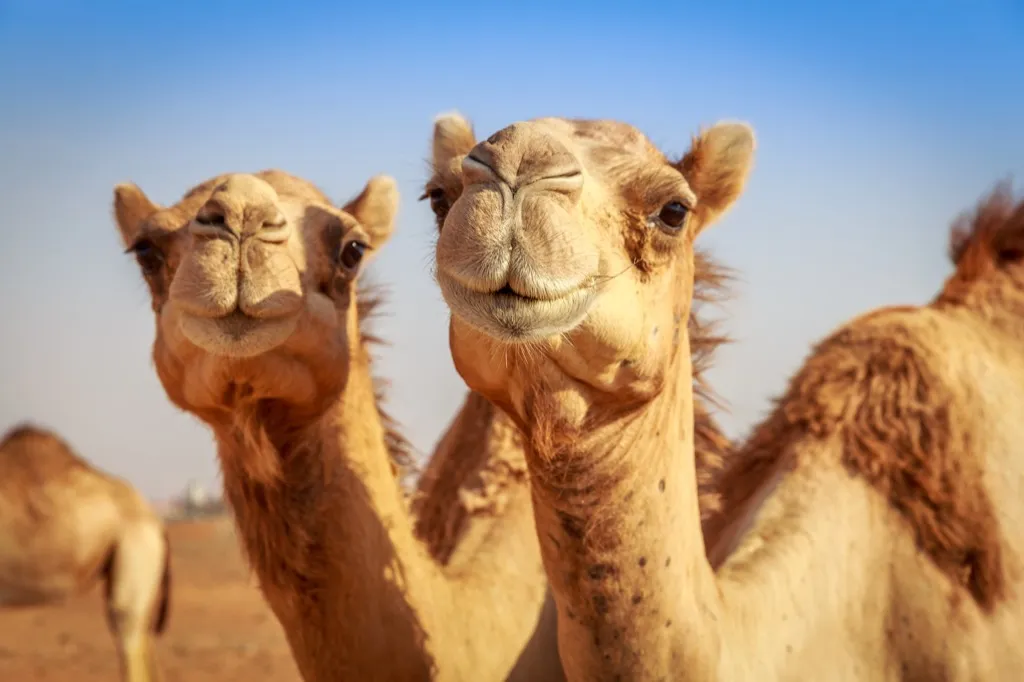
If you’re in the mood to make some dairy-based cheese, then you’ll need to curdle some milk in the process. However, that won’t be possible if all you’ve got on hand is camel’s milk, because it simply doesn’t curdle. “Due to its composition, camel milk does not curdle naturally and won’t coagulate as easily as other types of milk,” explains Scientific American.
#423: U.S. paper currency is actually a blend of cotton and linen.
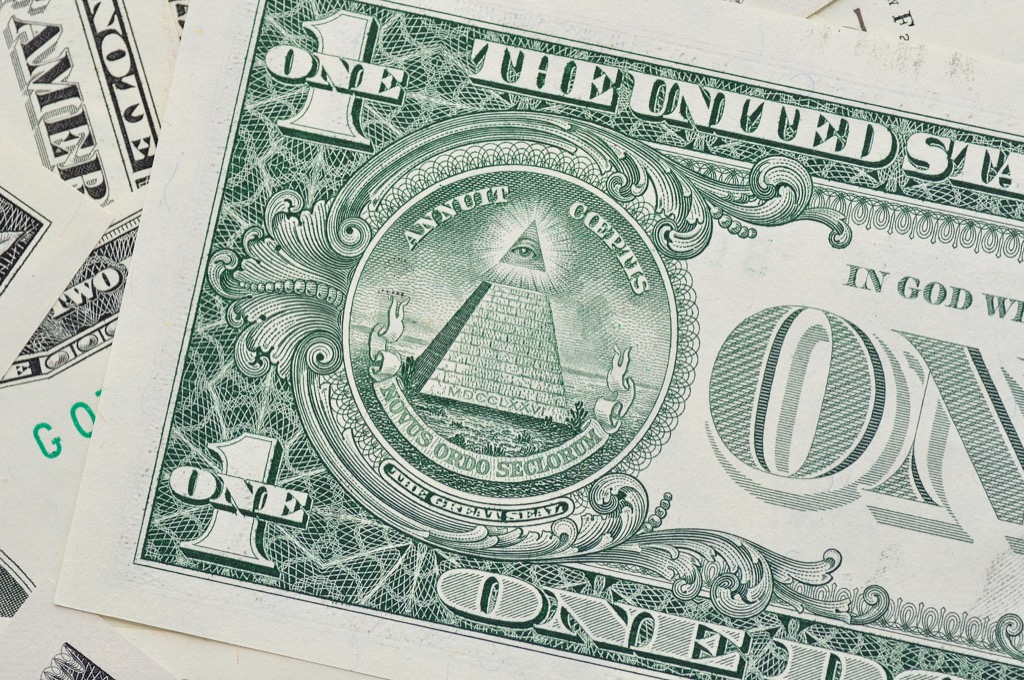
If you’re holding a stack of cash in your hands (lucky you!), then you’d likely say you had paper bills in your possession. However, what we refer to as paper currency is actually a blend of 75 percent cotton and 25 percent linen, according to the U.S. Department of the Treasury.
#1320: A traffic jam once lasted for 11 days in Beijing, China.

If you despise traffic, just be thankful you weren’t on the roads of Beijing, China, in the summer of 2010. As reported by ABC News, for 11 days, around 10,000 vehicles were trapped along a 74.5 mile stretch on the Beijing-Tibet expressway.
#873: President William McKinley had a pet parrot that he named “Washington Post.”
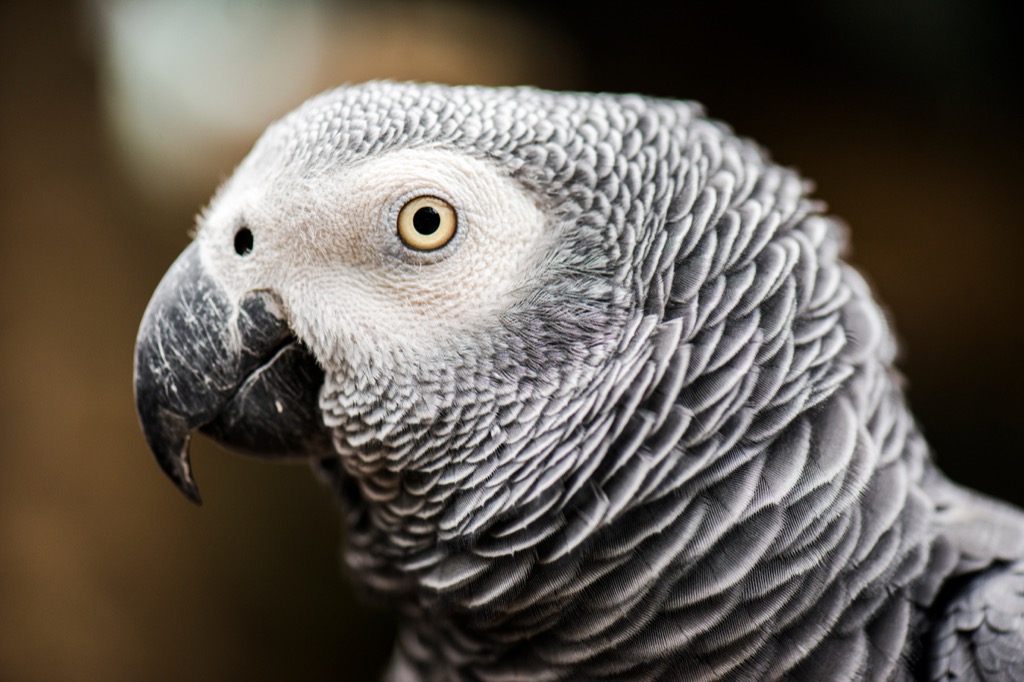
It’s not unusual for a president to share the White House with a pet or two. But William McKinley, who led the country from 1897 to 1901, really loved animals, keeping kittens, roosters, and even a pet parrot that he named “Washington Post.” Apparently, the parrot was so patriotic that when McKinley began humming the tune to “Yankee Doodle,” Washington Post would finish it, according to the official Mount Vernon website.
#60: The tongue is the fastest healing part of the body.

Snapple was mostly right on this one. But, to put it more specifically, “Wounds in the oral cavity heal faster and with less scarring than wounds in other parts of the body,” according to the Department of Periodontology and Oral Biochemistry at the Academic Centre for Dentistry Amsterdam. This is because saliva “promotes the healing of oral wounds.”
#17: A hummingbird weighs less than a penny.
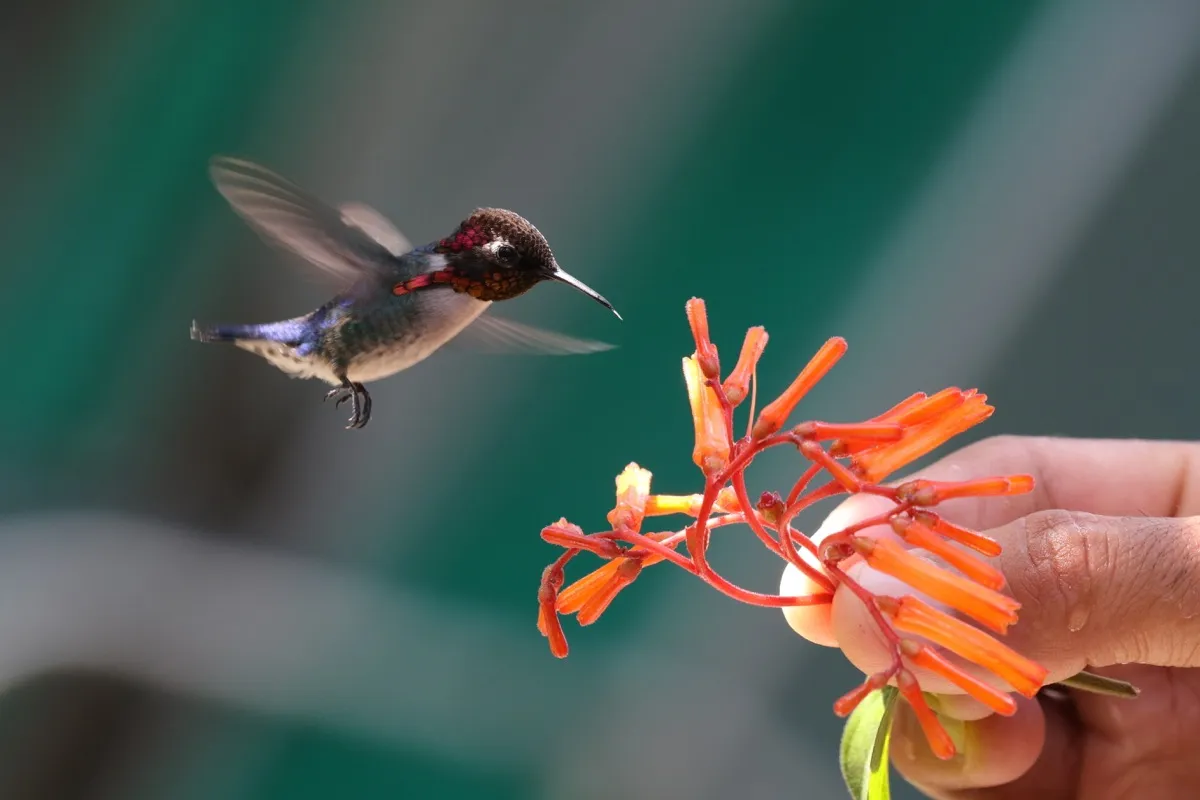
It’s common knowledge that hummingbirds are teeny, tiny creatures, but let’s put that into context. While some hummingbirds weigh up to 20 grams, the smallest ones weigh just 1.8 grams, which is less than the weight of a penny (2.5 grams).
#164: The first vacuum was so large, it was brought to a house by horses.

This is another fact Snapple got mostly correct. There have been various vacuum-like inventions over the years dating back to the mid-1800s, but as reported by Popular Mechanics, “In 1898, John S. Thurman of St. Louis created his gasoline-powered ‘pneumatic carpet renovator.’” The magazine continues, “While technically not a vacuum because it didn’t suck, the machine produced an ‘air-blast’ to dislodge the dust and blow it into a receptacle. The device was the size of a horse-drawn carriage. Thank goodness Thurman made house calls.”
#1287: Blueberries are also called “star berries.”
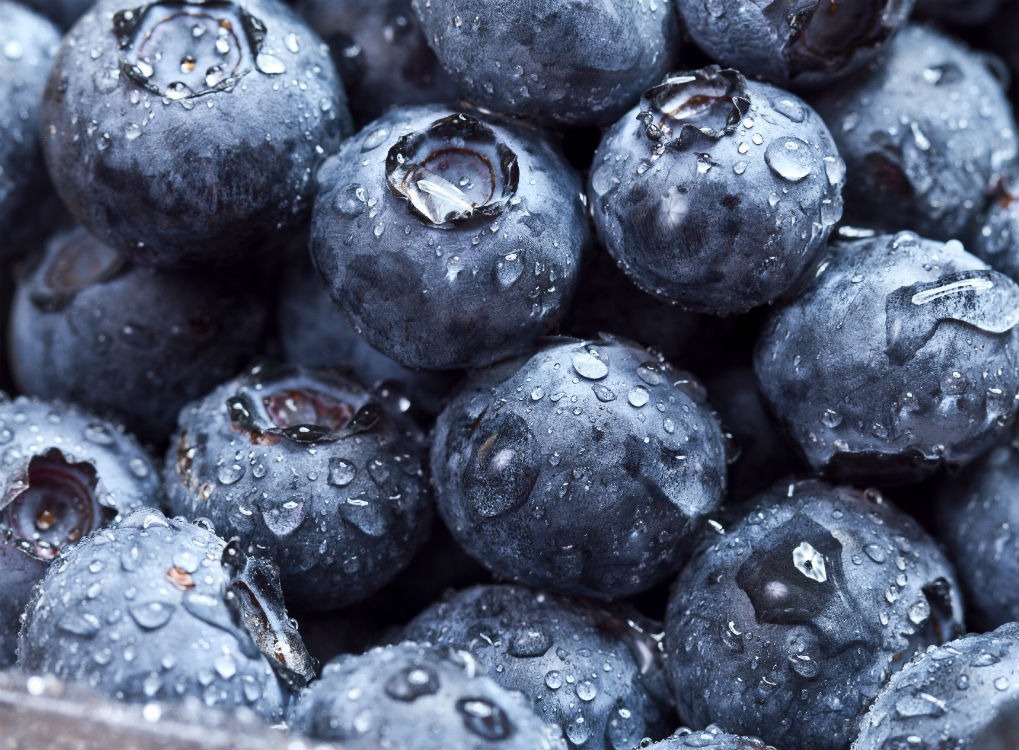
Blueberries have an undeniably appropriate name. However, the tangy treats were once called “star berries,” a name that comes from the star-shaped area or “crown” on the top of the berry.
#1000: A group of porcupines is called a prickle.
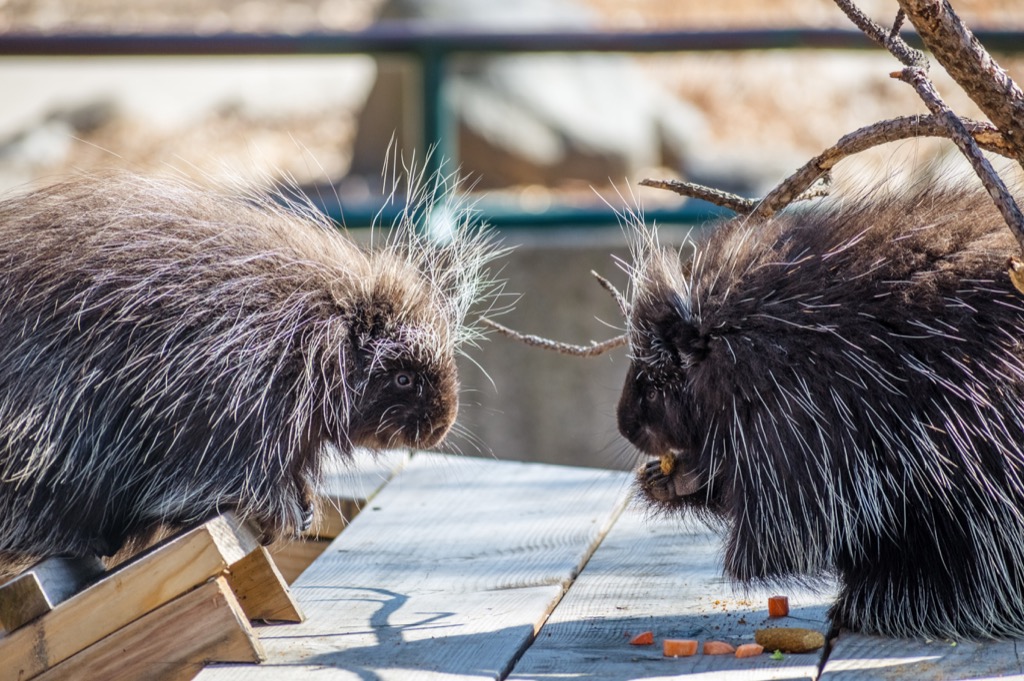
Porcupines are famous for their quills, and each animal can have more than 30,000 of the sharp spikes, which they use to pierce potential predators. That’s why it’s so perfect that a group of the skewer-covered creatures is officially called a prickle.
#1141: Thomas Jefferson and John Adams chipped off a piece of Shakespeare’s chair as a souvenir when they visited his home in 1786.

While we obviously wouldn’t suggest that you follow their example, Thomas Jefferson and John Adams performed a bit of vandalism back in 1786. On a trip to William Shakespeare’s former home in London, they hacked off a piece of the Bard’s old chair and took it with them as a souvenir. Adams claimed that they were acting “according to the custom,” the official Monticello website notes.
#38: Fish cough.
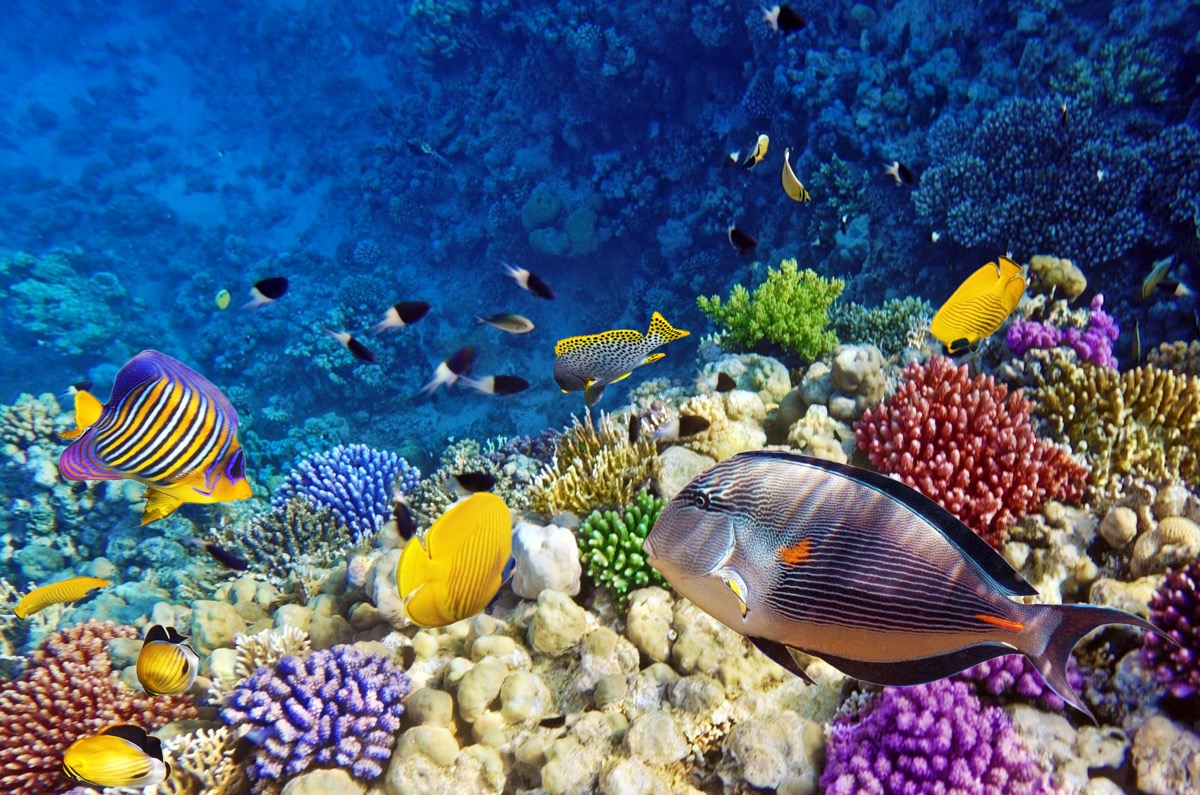
Under the sea, fish live an existence that is very different from ours. However, we do share some similarities, including the fact that both humans and fish cough. More precisely, a fish’s cough is called a “gill purge,” according to the U.S. Environmental Protection Agency.
#931: The nothingness of a black hole generates a sound in the key of B flat.
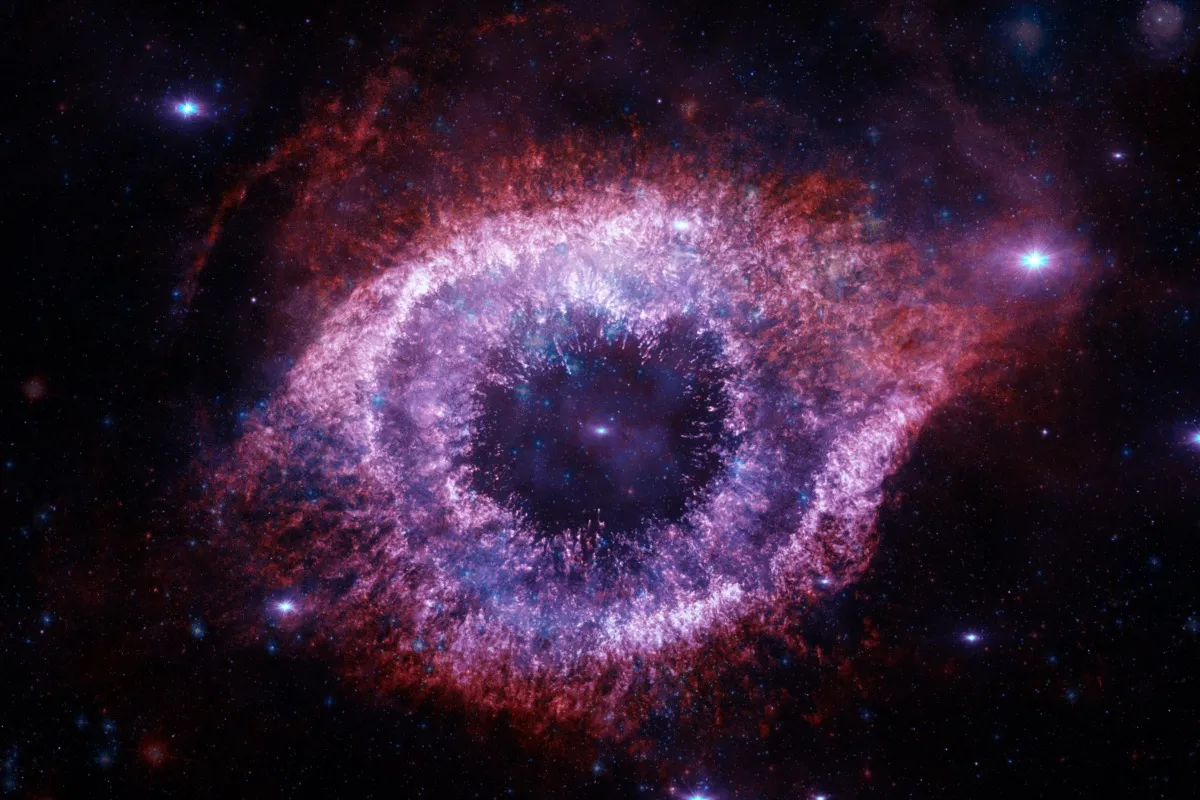
Turns out, space isn’t totally silent. NASA reports that “in musical terms, the pitch of the sound generated by the black hole [in the Perseus cluster] translates into the note of B flat. But, a human would have no chance of hearing this cosmic performance because the note is 57 octaves lower than middle-C.”
#453: Raindrops can fall as fast as 20 miles per hour.

Whether it’s drizzling or pouring, you probably consider how much it’s raining rather than how fast the precipitation is coming down before deciding whether or not you want to go outside. However, if you bothered to track rain as it falls, you’d find that the terminal velocity of a typical raindrop is about 20 miles per hour, according to Union University.
#1007: OMG was added to dictionaries in 2011, but its first known use was in 1917.
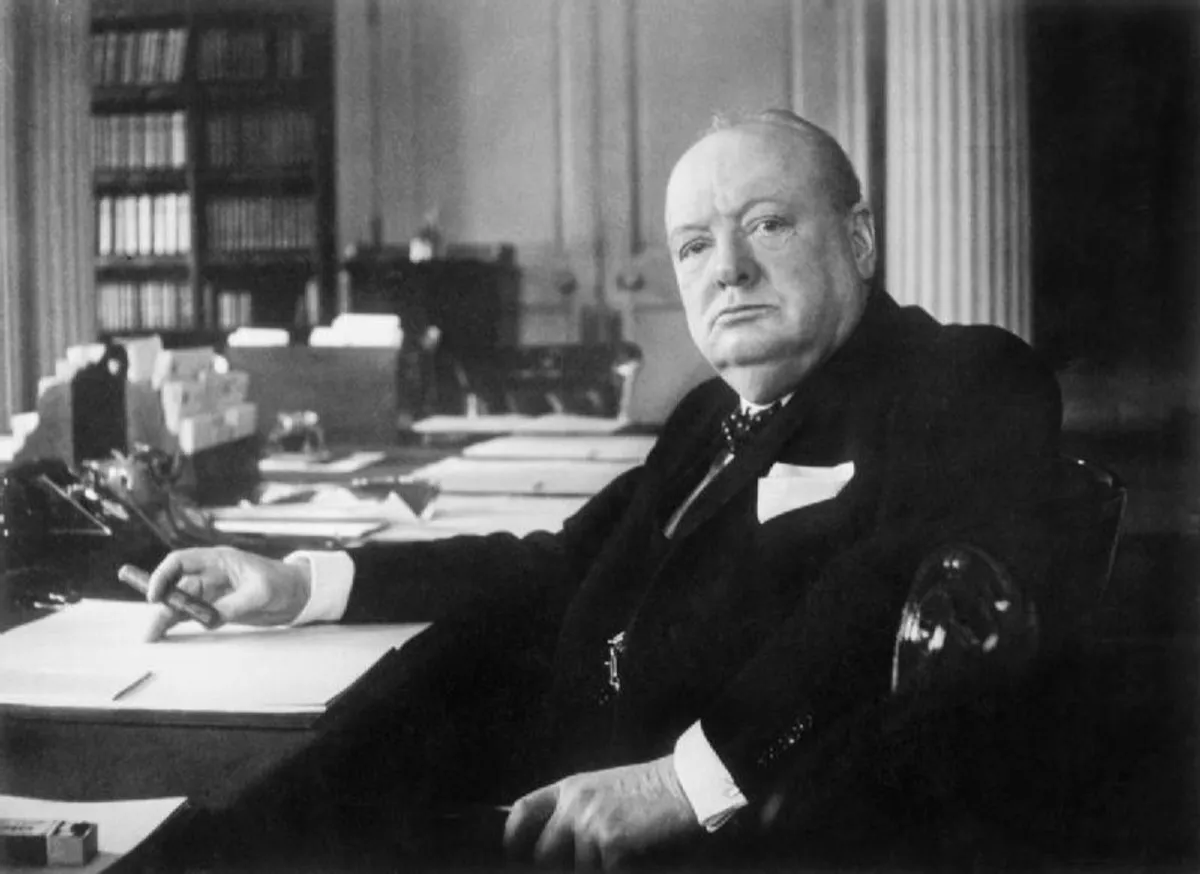
OMG is an abbreviation that many of us started using when texts, tweets, and other short messages became the norm, but it turns out it was first used in 1917 in a letter from a British admiral to Winston Churchill, according to Wall Street Journal. It was only added to modern dictionaries in recent years. (Snapple’s fact says 2011, however, Merriam-Webster entered it into its online dictionary two years earlier, in 2009.)
#1319: Ancient Egyptians slept on headrests made of wood, ivory, or stone.

The pillows we use in the U.S. today tend to be filled with feathers or polyester. But in ancient times, Egyptians didn’t use anything as soft or cozy. Instead, they used headrests that were made of hard materials such as wood, ivory, or simple stone. The Glencairn Museum in Bryn Athyn, Pennsylvania, has a collection of the headrests, which were called “weres.”
#1356: The world’s largest mountain range is under the sea.

Mount Everest or Kilimanjaro are likely the massive mountains you know by name. But if you’re looking for the longest mountain range on Earth, you’d need to check out the mid-ocean ridge, which the National Ocean Service reports stretches for 40,389 miles, with 90 percent of it under the sea.
#1489: “Take Me Out to the Ballgame” was written in 1908 by Jack Norworth and Albert Von Tilzer, both of whom had never been to a baseball game.

“Take Me Out to the Ballgame” is a beloved part of baseball culture, but it was written by two men who had never even been to a game. The Library of Congress states that the United States Copyright Office received two copies of the song “Take Me Out to the Ball Game” on May 2, 1908. The site goes on to say that lyricist Jack Norworth “maintained that he had never attended a professional baseball game before penning those 16 lines, which were set to music by songwriter and publisher Albert Von Tilzer (1878-1956), who also had never seen a baseball game.”
#441: Jousting is the official sport in the state of Maryland.
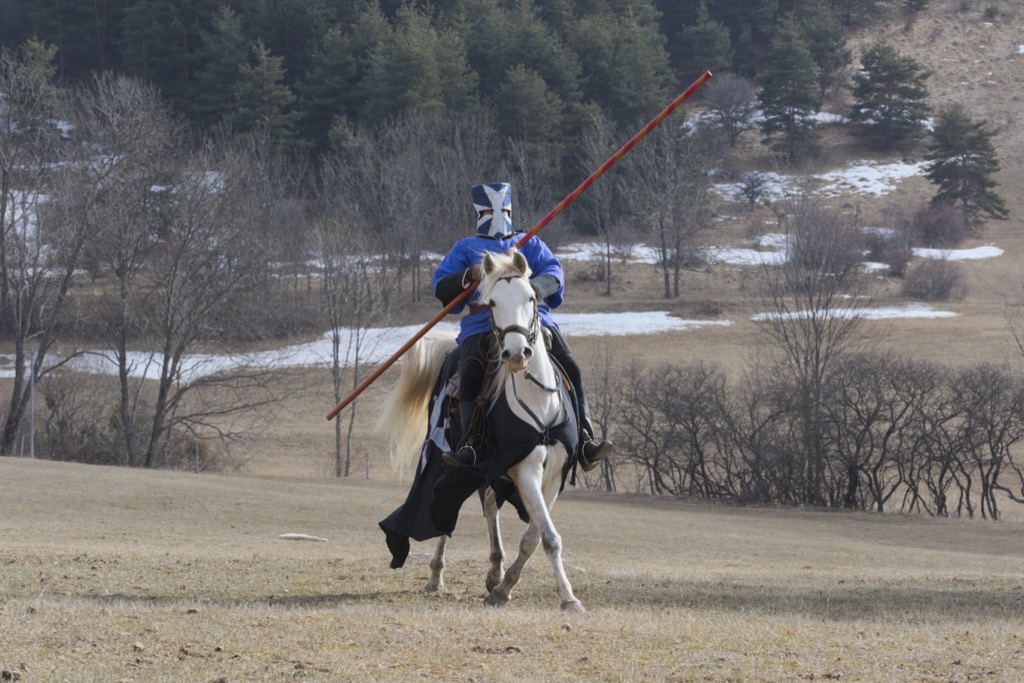
Jousting is the official state sport of Maryland and has been since June 1, 1962. The sport was brought to the state from England, thanks to the influence of colonial Maryland’s first governor, Cecil Calvert.
#463: The dot over the letter “i” is called a tittle.

The dot above the letter “i” (and the letter “j” for that matter) actually has a name. Merriam-Webster notes, “In English, tittle can refer to any point or small sign that is used as a diacritical mark. It has been applied to the dot over the letters ‘i’ and ‘j.’”
#445: If there are two full moons in a month, the second one is called a blue moon.

Although the term “blue moon” suggests it was inspired by the shade of the lunar occurrence, the moon doesn’t actually appear blue. Instead, blue moons are all about timing. This event occurs when two full moons fall within the same month or when an extra full moon takes place during a single season. And it’s not as rare as the saying “once in a blue moon” would have you believe—it occurs around every 2.5 years, according to NASA.
#42: Frogs cannot swallow with their eyes open.
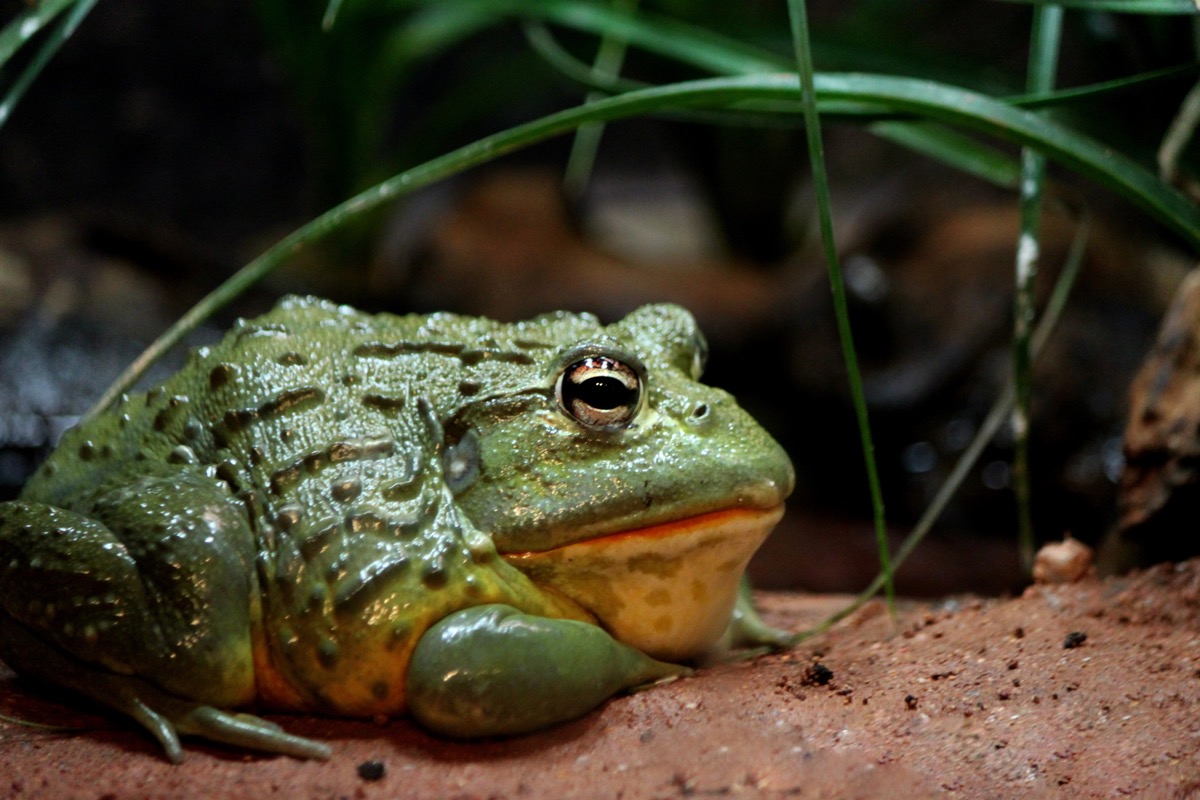
Frogs close their eyes while eating, but it’s not because they’re savoring each morsel. “Frogs use their eyes to push food down while swallowing,” Discover states. “It turns out that while swallowing, a frog’s eyes actually retract down towards its esophagus. … Eye retraction may aid swallowing by helping to push food back toward the esophagus, but this hypothesis has never been tested.”
#424: The zip in zip code stands for Zone Improvement Plan.

During World War II, delivery services in the United States began using postal zones to cope with the increasing amount of mail that was being sent around the country, as well as the dearth of postal carriers. According to JSTOR Daily, 65 percent of mail bore zip codes by the year 1967.
#1451: An “immaculate inning” is when a pitcher strikes out three batters with only nine pitches.

It’s always impressive when a baseball pitcher throws a no-hitter. But they can also achieve an “immaculate inning,” which means successfully striking out three batters with only nine pitches.
“While the ‘Immaculate Inning’ isn’t nearly as rare as it once was—there were none from 1929-52 and eight alone in 2017—any pitcher who can plow through a big-league lineup on nine straight strikes deserves a special place in the record book,” Ed Eagle writes for the Major League Baseball official site.
#1444: Light could travel around the Earth nearly 7.5 times in one second.
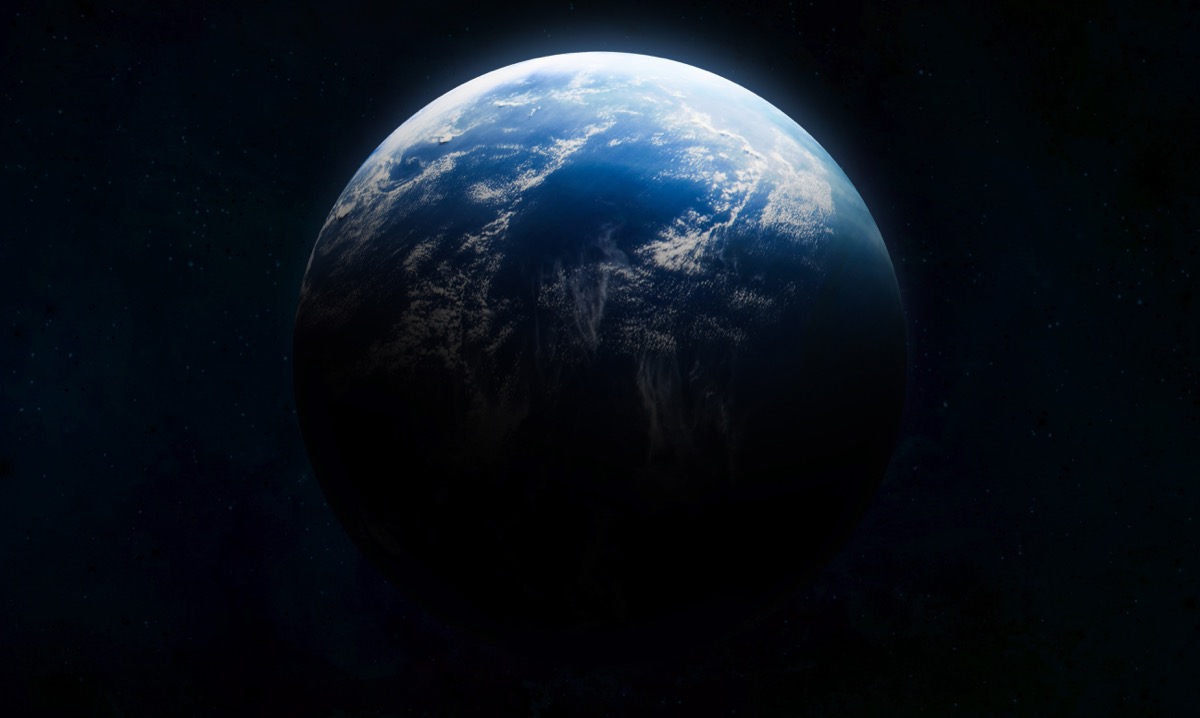
Space breaks down the math on this one, explaining, “The speed of light in a vacuum is 186,282 miles per second (299,792 kilometers per second), and in theory nothing can travel faster than light. In miles per hour, light speed is, well, a lot: about 670,616,629 mph. If you could travel at the speed of light, you could go around the Earth 7.5 times in one second.” Pretty amazing.
#823: Sailors once thought wearing gold earrings improved eyesight.

Earrings may have given pirates a bit of fashionable flair, but the accessories weren’t worn simply for stylish reasons. Some pirates thought earrings could improve eyesight and ward off seasickness, according to Live Science.
#84: Oysters can change from one gender to another and back again.
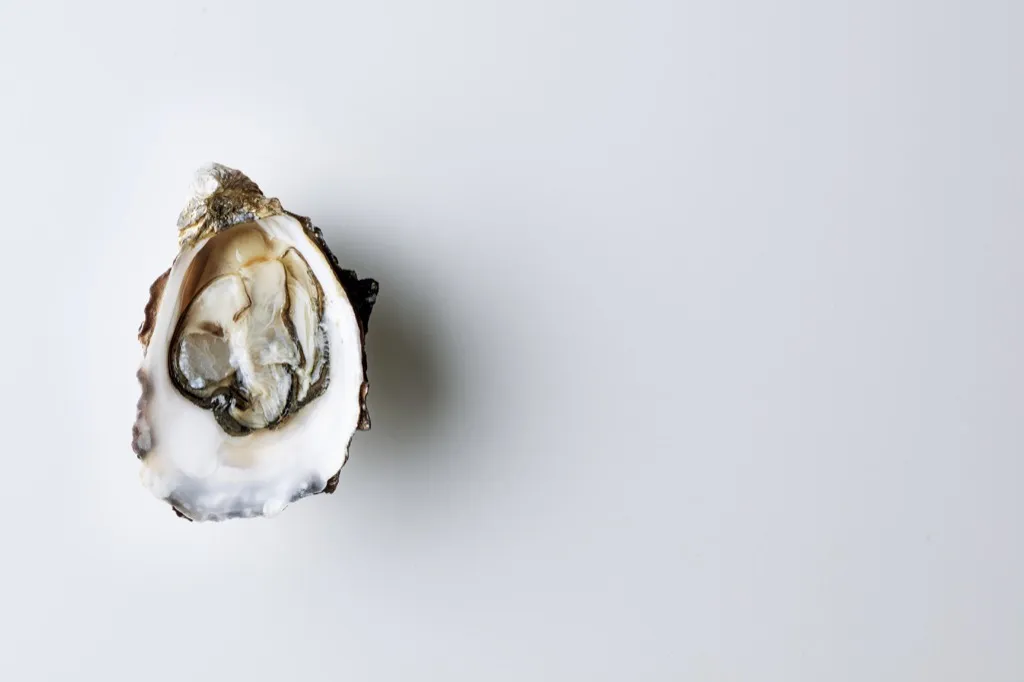
Oysters are a protandric species, which means that they don’t remain male or female over the course of their lifetime. Instead, they change genders. With reproductive organs that contain both eggs and sperm, oysters first release sperm when they mature before switching over to eggs once they get a little older.
#310: The word “facetious” features all the vowels in alphabetical order.

When you list vowels in the English language, you likely say them in alphabetical order: a, e, i, o, and u. And when you spell out “facetious”—which means “joking or jesting often inappropriately,” according to Merriam-Webster—you’ll see that you’re using each vowel in the same alphabetical order.
#799: The official color of California’s Golden Gate Bridge is International Orange.

While the Golden Gate Bridge is obviously orange, it isn’t just any old orange—it’s International Orange. According to the bridge’s website, “consulting architect Irving F. Morrow was commuting to the construction site from his home in the East Bay via ferry” when “he became inspired by the red lead color” of the primer. From there, “Morrow undertook color studies, which resulted in the specification of the unique Golden Gate Bridge International Orange because it blended well with the nearby hills and contrasted with the ocean and sky.”
#1254: There is a star that is a 10-billion-trillion-trillion-carat diamond.

Among the biggest celebrity engagement rings in history are Elizabeth Taylor’s 33.19-carat whopper and Jackie Kennedy Onassis’ 40-carat marquise cut diamond. But those sparklers are nothing compared to a star in the constellation Centaurus that is a diamond of 10 billion trillion trillion carats. Astronomer Travis Metcalfe of the Harvard-Smithsonian Center for Astrophysics, who led the team of researchers that discovered the star, told BBC News, “You would need a jeweler’s loupe the size of the sun to grade this diamond.”
#86: Until the 19th century, solid blocks of tea were used as money in Siberia.
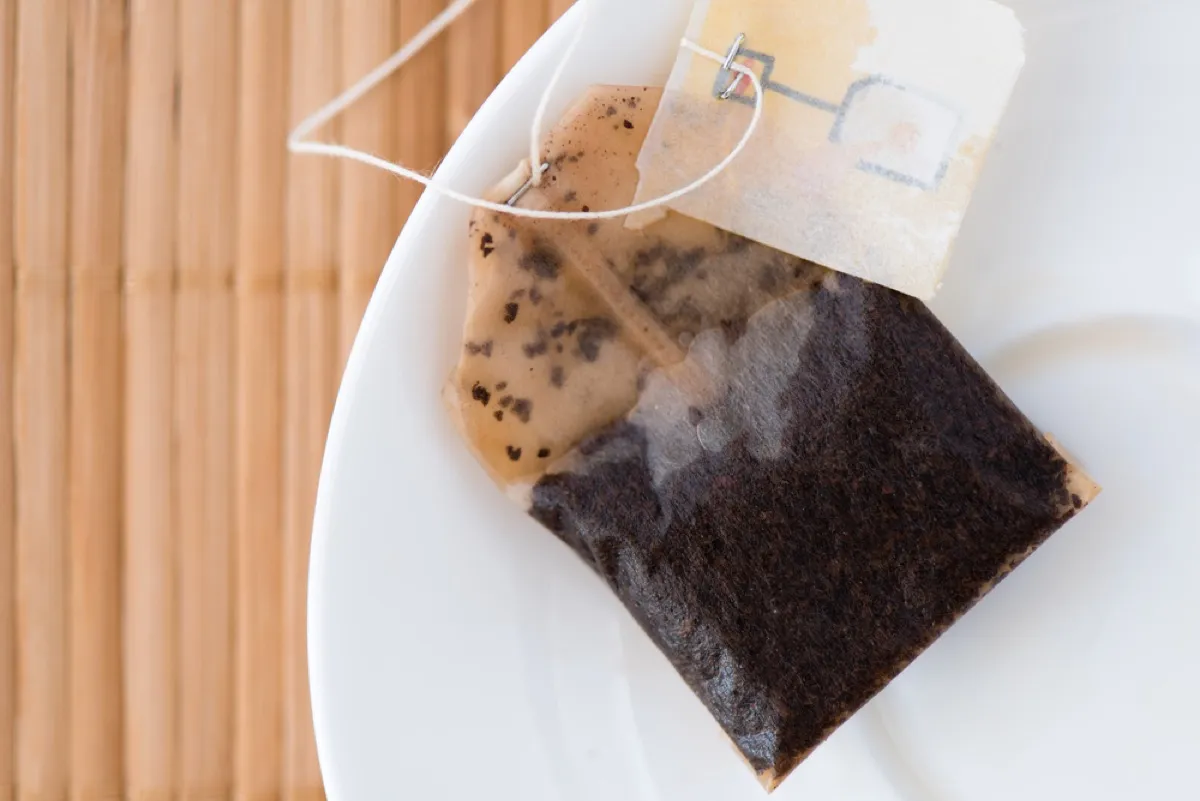
Today, tea is something you drink. But until fairly recently, it was a form of currency. Tea bricks, which are bricks made of compressed whole leaf or ground tea, had serious value in some countries, including Siberia, until World War II. According to Imperial Tea Garden, “Brick tea was used as medicine to rid cough and colds, and some historians say tea leaves supplied variety to the diets of people living in areas where vegetables and herbs were scarce. In Tibet, tea bricks were in such demand that swords, horses and other property were sometimes priced in a given number of tea bricks.”
#1159: Jimmy Carter filed a report for a UFO sighting in 1973, calling it “the darndest thing I’ve ever seen.”

Yes, Jimmy Carter, who became president of the United States in 1977, filed a report with the National Investigations Committee on Aerial Phenomena (NICAP) in 1973 about an experience he had in October 1969.
While waiting outside for a Lion’s Club Meeting in Leary, Georgia, “he spotted what he called ‘the darndest thing I’ve ever seen‘ in the sky,” History says. “Carter, as well as 10 to 12 other people who witnessed the same event, described the object as ‘very bright [with] changing colors and about the size of the moon.’ Carter reported that ‘the object hovered about 30 degrees above the horizon and moved in toward the earth and away before disappearing into the distance.’”
#83: Googol is a number (1 followed by 100 zeros).

Although the word “googol” looks like a misspelling of the popular search engine, it’s actually a number—and a staggeringly large one at that. If you were to write out a googol, it would be a 1 followed by 100 zeros. To our earlier point, it was also the inspiration for the brand name Google, which was originally called Backrub.
#990: About 90 percent of all garlic consumed in the U.S. comes from Gilroy, California.
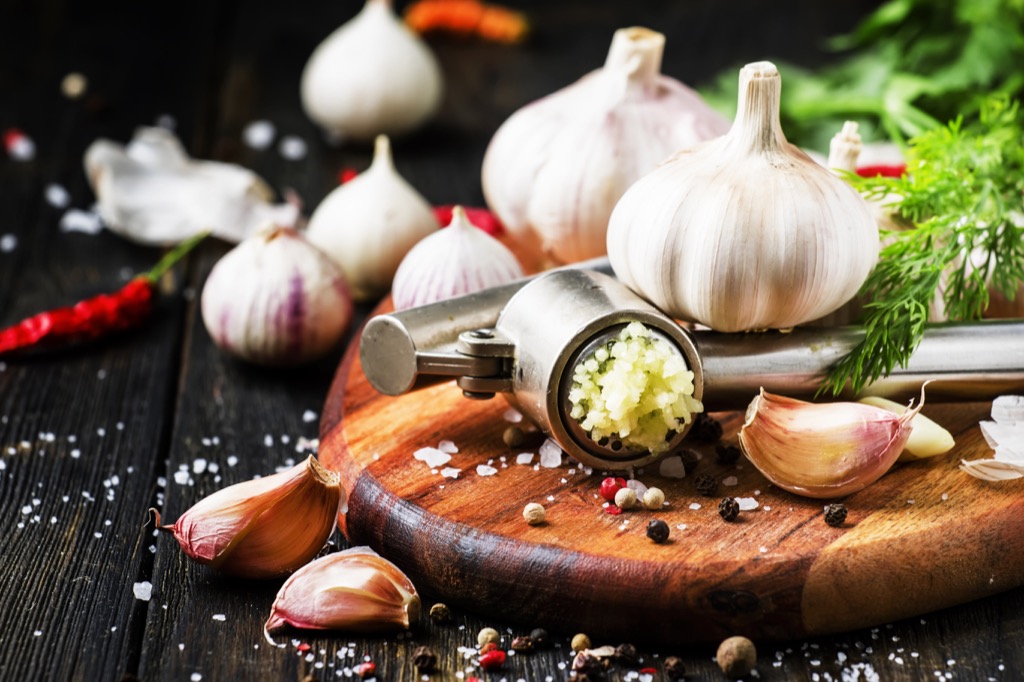
If you’re in the United States and having garlic with your meal, there’s a good chance that it originally came from Gilroy, California. The area grows around 90 percent of the garlic Americans eat, which, the Los Angeles Times reports, is around 150 million pounds per year.
RELATED: The 60 Most Interesting World Facts You’ll Ever Hear.